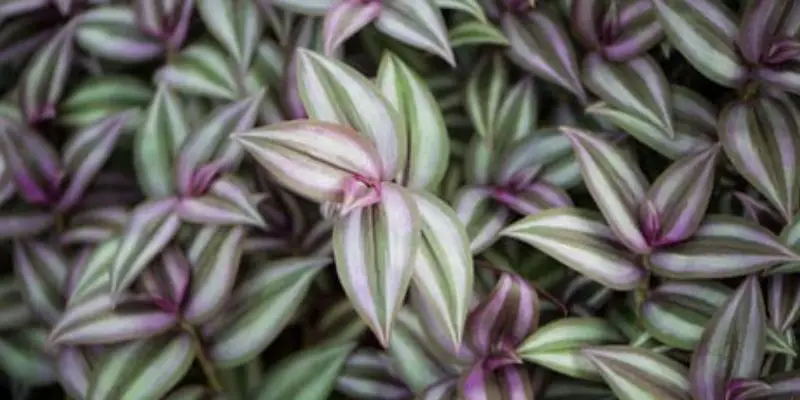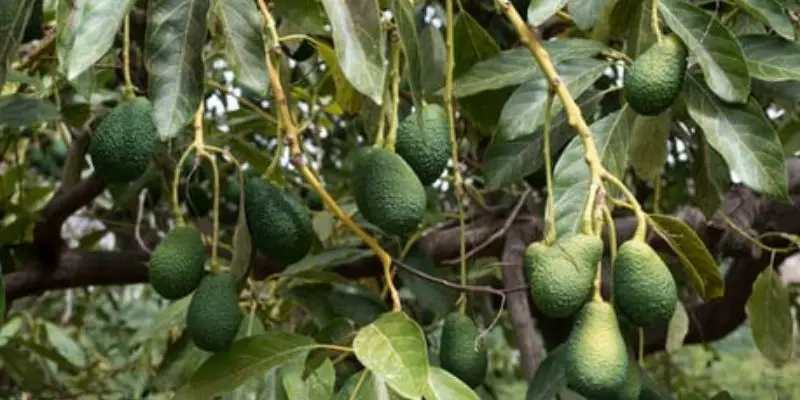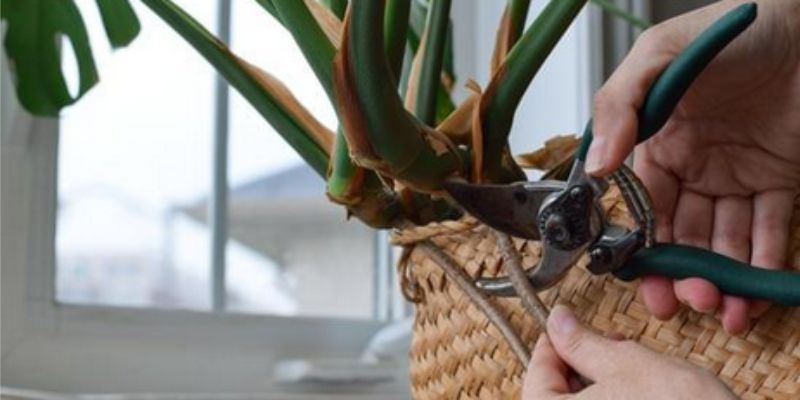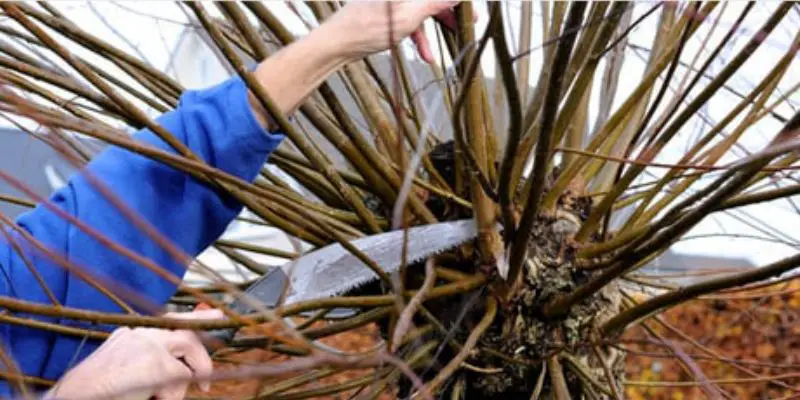With their colorful trailing stems and eye-catching striped leaves, wandering jew plants make popular houseplant accents. But without occasional pruning, they become leggy and sparse. By learning how to prune wandering jew, you can encourage wandering jews to grow into full, bushy specimens that showcase their vibrant foliage.
An Introduction to Pruning Wandering Jew Plants
Wandering jew plants grow energetically in ideal conditions, producing long vining stems studded with colorful oval leaves. Pruning provides these benefits:
- Encourages bushy compact growth by pinching long stems
- Shapes messy, sprawling plants into tidy specimens
- Removes unsightly dead or damaged stems and leaves
- Rejuvenates old plants through cutting back long legs
- Keeps growth even and full especially in containers
- Allows light exposure by thinning congested nodes
With occasional judicious pruning, wandering jews become beautiful, prolific houseplants.
When to Prune Wandering Jew Plants
Time pruning to avoid removing developing leaves or shoots:
- Prune actively growing wandering jews in early to mid spring.
- Prune dormant plants in late winter just before seasonal growth resumes.
- Limit pruning in fall to prevent cold sensitivity in some varieties.
- Avoid pruning for 1-2 months after repotting or dividing plants.
Target pruning before and during growth spurts to direct emerging stems and leaves.
Tools for Pruning Wandering Jew Plants
Having the right tools makes pruning wandering jews quicker and easier:
- Small bypass hand pruners for precision stem cutting
- Sharp gardening scissors for quick tip pruning
- Sterilizing spray or wipes to prevent bacterial spread
- Humidity dome to protect freshly pruned plants
- Tray and potting mix for rooting tip cuttings (optional)
- Compost bin or yard waste bags for plant debris
Quality tools allow easily taming fast growing wandering jews through pruning.
How to Prune Wandering Jew Houseplant
Follow these simple wandering jew pruning steps:
- Sterilize tools in disinfectant solution prior to make cuts to prevent disease spread.
- Remove any dead or damaged stems and leaves at their base back to healthy growth.
- If needed, cut back leggy stems halfway to a healthy leaf node to encourage fuller growth from below.
- Pinch back stem tips to promote bushy growth. Leave 2-3 leaf nodes on stems when tip pruning.
- Thin any congested nodes or crossed stems to allow light exposure.
- Continue sanitizing tools during use and between plants.
With the right technique, wandering jews respond well to careful pruning.
Using Pruning to Shape Potted Wandering Jews
Container wandering jews require frequent shaping:
- Prune often to keep plants compact and prevent size from exceeding the container.
- Remove vertical stems growing well above the desired maximum plant height.
- Cut back perimeter shoots to keep the plant’s size in check and prevent sprawling.
- Thin small inner shoots and leaves to improve interior light penetration.
Frequent tip pruning shapes container wandering jews into shapely specimens that don’t outgrow their pots.
Cutting Back Leggy Wandering Jew Stems
Lanky, leggy wandering jew stems that display sparse leaf coverage should be rejuvenated. Here’s how:
- Identify which long stems need cutting back due to few leaves and minimal vigor.
- Make a clean diagonal cut with sterile pruners about halfway down each leggy stem. Angle slightly above an outward facing node.
- If still quite lengthy, cut leggy stems off entirely near their base.
- New growth soon emerges from buds below pruning cuts to replace the legginess.
Removing leggy growth forces lower nodes to generate fresh compact foliage.
How to Prune Wandering Jew Cuttings
Pruning offers an easy propagation method for wandering jews:
- Sterilize pruners or scissors and take 3-6 inch tip cuttings from vigorous healthy stems.
- Trim just below a node so it can form roots and above a set of leaves.
- Dip cut end in rooting hormone paste. Plant in potting mix.
- Cover with a plastic humidity dome until rooted. Keep warm and moist, not soaked.
- Once rooted, remove dome and grow in bright indirect light.
Tip prunings quickly root to generate more beautiful wandering jew plants easily.
Rejuvenating Overgrown Wandering Jew Plants
Very overgrown, leggy wandering jew plants with sparse foliage recover well from aggressive pruning:
- Begin in early spring before significant new growth appears.
- Cut back all stems to just 2-3 inches above the potting mix.
- Provide bright light, consistent moisture and humidity. Avoid direct sun which burns pruned plants.
- As new shoots emerge, continue guiding them with tip pinching.
- Expect full recovery within a few months. The hard pruning spurs lush, compact regrowth.
Even very neglected wandering jews regain their beauty through drastic pruning followed by careful regrowth guidance. The pruning removes the legginess and inspires fresh new foliage.
Avoiding Common Wandering Jew Pruning Mistakes
When trimming wandering jew plants, be sure to avoid:
- Removing too many leaves and stems, leaving minimal foliage to power new growth.
- Failure to sterilize pruning tools which spreads diseases between plants.
- Cutting away green healthy stems. Remove only yellowing, dying or dead stems.
- Shearing or topping wandering jews into tight balls. This ruins their natural shape.
- Exposing freshly pruned plants to direct hot sun which can burn tender new shoots.
With the proper technique and care, wandering jews thrive under pruning.
Conclusion
While wandering jew plants grow exuberantly with little care, occasional judicious pruning keeps them shapely and bushy. By pinching back leggy stems, thinning congested nodes, and removing damaged foliage, wandering jews remain compact and full. Rejuvenate old plants through hard pruning to inspire fresh new growth. With some simple pruning skills, wandering jew plants continue growing vigorously to showcase their colorful striped leaves.
Frequently Asked Questions on How to Prune Wandering Jew Plants
How much can I prune off a wandering jew plant at one time?
Limit overall pruning to no more than 30% of the plant’s total stems and foliage. Excessive pruning stresses plants. For aggressive rejuvenation pruning, spread hard cutting back over successive seasons.
How often should wandering jew plants be pruned?
Actively growing wandering jews benefit from tip pruning about once monthly during the spring and summer. Potted plants may require pruning more often, while dormant winter plants need little trimming.
Should I prune off wandering jew flowers?
Yes, it’s best to snip off any flower stalks as soon they appear. Removing flowers directs the plant’s energy into additional foliage growth rather than seed production.
Is it better to take tip cuttings or cut back whole stems when pruning wandering jews?
Take tip cuttings when propagating, but reduce leggy stems a greater amount by cutting back entire stems halfway or more to force lower branching.
Should I prune wandering jew roots when repotting?
Yes, conservatively prune any circled or tangled roots when repotting to encourage renewed root growth into the new potting mix.
Can I prune wandering jew plants during winter dormancy?
Limit dormant season pruning to removing only dead, damaged or unsightly growth. Excessive pruning when plants enter winter rest stresses them.

Michael Glenn is a certified arborist and horticultural expert with over 15 years of experience in the landscape industry. His passion for plants and trees has led him to become a sought-after authority on pruning and trimming techniques. Glenn’s in-depth knowledge of proper pruning methods, timing, and tools has helped countless homeowners and professionals maintain healthy, aesthetically pleasing gardens and landscapes.
In addition to sharing his pruning expertise through practical tips, step-by-step guides, and expert advice, Glenn is also a respected author of pruning tool buying guides. His comprehensive reviews and comparisons ensure readers can make informed decisions when investing in quality loppers, pruning shears, saws, and other essential equipment. With a deep understanding of plant biology and sustainable practices, Glenn’s writing empowers audiences with the knowledge needed to properly care for green spaces.





